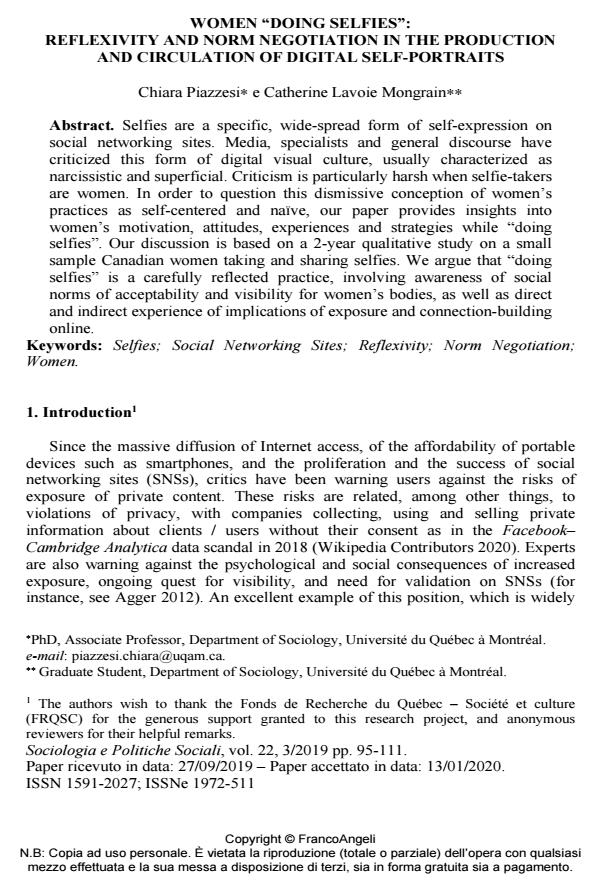Women "doing selfies": reflexivity and norm negotiation in the production and circulation of digital self-portraits
Journal title SOCIOLOGIA E POLITICHE SOCIALI
Author/s Chiara Piazzesi , Catherine Lavoie Mongrain
Publishing Year 2020 Issue 2019/3
Language English Pages 17 P. 95-111 File size 235 KB
DOI 10.3280/SP2019-003005
DOI is like a bar code for intellectual property: to have more infomation
click here
Below, you can see the article first page
If you want to buy this article in PDF format, you can do it, following the instructions to buy download credits

FrancoAngeli is member of Publishers International Linking Association, Inc (PILA), a not-for-profit association which run the CrossRef service enabling links to and from online scholarly content.
Selfies are a specific, wide-spread form of self-expression on social networking sites. Media, specialists and general discourse have criticized this form of digital visual culture, usually characterized as narcissistic and superficial. Criticism is particularly harsh when selfie-takers are women. In order to question this dismissive conception of women’s practices as self-centered and naïve, our paper provides insights into women’s motivation, attitudes, experiences and strategies while "doing selfies". Our discussion is based on a 2-year qualitative study on a small sample Canadian women taking and sharing selfies. We argue that "doing selfies" is a carefully reflected practice, involving awareness of social norms of acceptability and visibility for women’s bodies, as well as direct and indirect experience of implications of exposure and connection-building online.
Keywords: Selfies; Social Networking Sites; Reflexivity; Norm Negotiation; Women.
- Les épreuves de la beauté et les paradoxes de la capacité de choix des femmes Chiara Piazzesi, Catherine Lavoie Mongrain, in Recherches féministes /2021 pp.47
DOI: 10.7202/1085241ar
Chiara Piazzesi , Catherine Lavoie Mongrain, Women "doing selfies": reflexivity and norm negotiation in the production and circulation of digital self-portraits in "SOCIOLOGIA E POLITICHE SOCIALI" 3/2019, pp 95-111, DOI: 10.3280/SP2019-003005